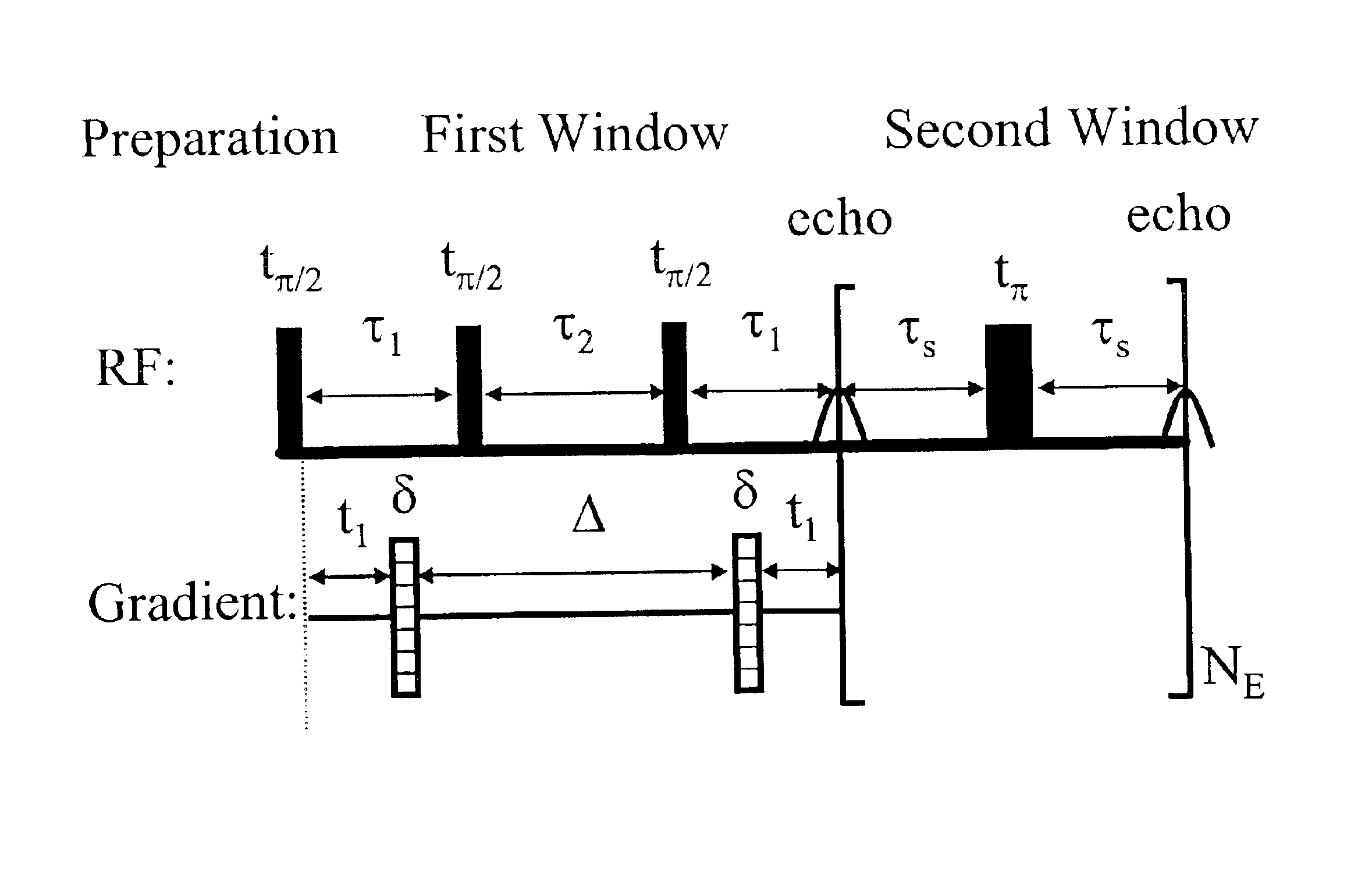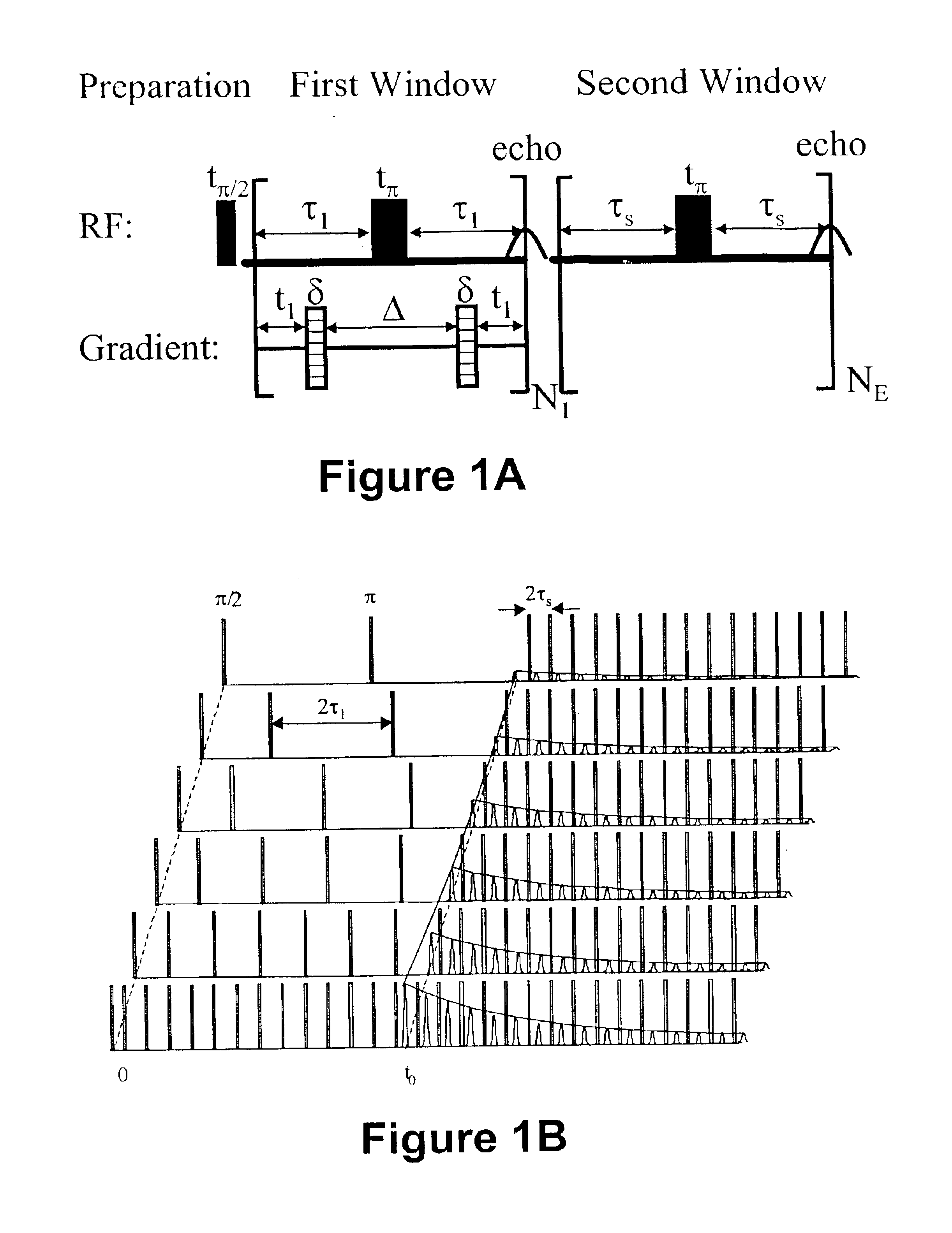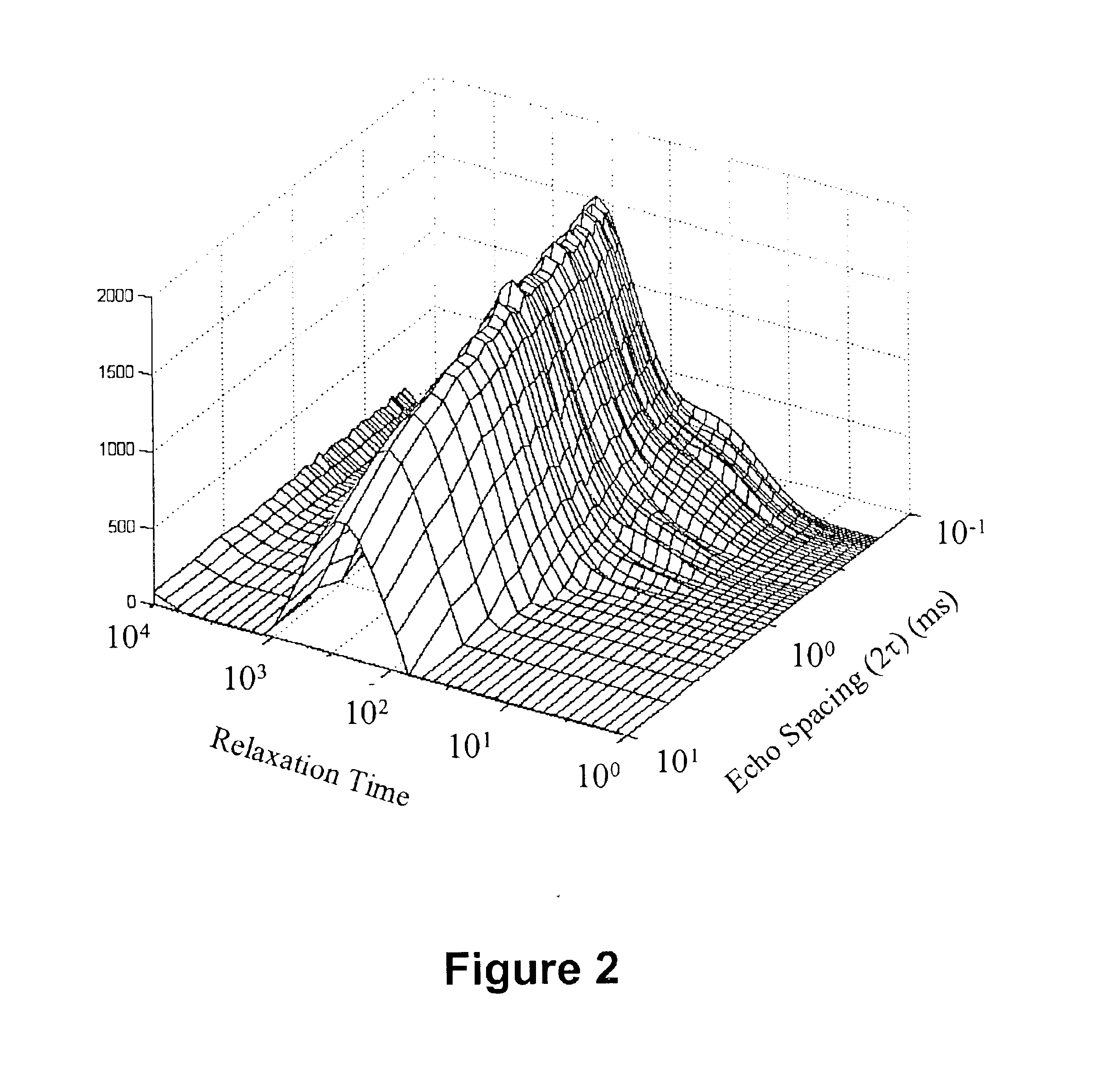Methods of decoupling diffusion effects from relaxation times to determine properties of porous media containing fluids
a technology of diffusion effects and relaxation times, which is applied in the direction of reradiation, measurement using nmr, instruments, etc., can solve the problems of long iterative computations, and serious affecting the accuracy of the second inversion
- Summary
- Abstract
- Description
- Claims
- Application Information
AI Technical Summary
Benefits of technology
Problems solved by technology
Method used
Image
Examples
Embodiment Construction
Modified CPMG pulse sequences are applied to porous media containing fluids to determine various properties of the media and fluids. The modified CPMG pulse sequences allow various properties to be determined which previously have been undeterminable by prior methods due to the diffusion effects on T.sub.2 relaxation time. These diffusion effects are particularly significant where large internal field gradients exist in fluids located in pore spaces of porous media.
Signals emitted from fluids and the media are analyzed to determine T.sub.2 relaxation time (i.e. reflecting pore size), internal field gradient g, and amplitude which is proportional to the proton population. These properties are then plotted as 2D NMR maps to enhance the visualization of properties of the porous media and fluids contained therein. Similarly, diffusion coefficient distribution D can be determined and plotted in a 2D NMR map, where one axis is the T.sub.2 relaxation time, a second axis is the diffusion co...
PUM
 Login to View More
Login to View More Abstract
Description
Claims
Application Information
 Login to View More
Login to View More - R&D
- Intellectual Property
- Life Sciences
- Materials
- Tech Scout
- Unparalleled Data Quality
- Higher Quality Content
- 60% Fewer Hallucinations
Browse by: Latest US Patents, China's latest patents, Technical Efficacy Thesaurus, Application Domain, Technology Topic, Popular Technical Reports.
© 2025 PatSnap. All rights reserved.Legal|Privacy policy|Modern Slavery Act Transparency Statement|Sitemap|About US| Contact US: help@patsnap.com



